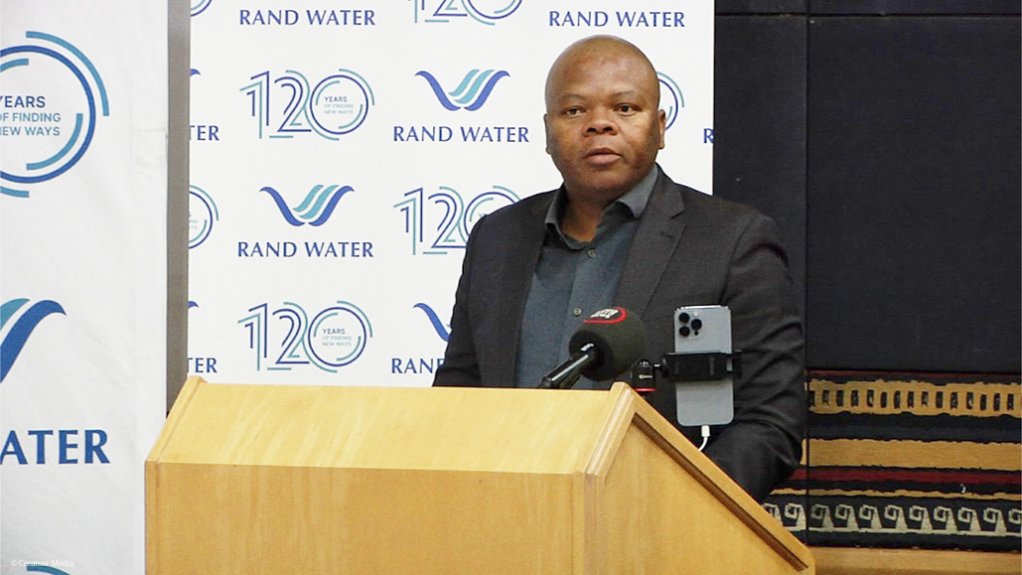Bulk water supplier Rand Water on Thursday reported a recovering and stabilising bulk water system, as critical reservoirs start improving to acceptable levels and metropolitan consumption is on a downward trajectory.
Speaking to the media at its weekly status update of the bulk system on Thursday, Rand Water COO Mahlomola Mehlo said that the critical reservoirs of the bulk water supplier were on an upward increase, with the 53 reservoirs currently in commission collectively reaching the so-called 50 zone.
However, the company is targeting reservoir levels in the 60 to 80 zone, which will enable the utility to undertake routine maintenance without interrupting any water supply as the reservoirs are operating at higher levels.
Meanwhile, while the three major metropoles’ consumption remain above targeted levels, there have been improvements since last week.
Collectively, the City of Johannesburg (CoJ), the City of Tshwane (CoT) and the City of Ekurhuleni (CoE) are consuming 3 132-million litres a day as at November 6, a decline from the 3 256-million litres a day as at October 30.
Although still above the targeted 2 926-million litres a day, the week-on-week decline shows that the interventions Rand Water is continuing with the metropoles are delivering positive results.
Mehlo further noted that all three metropolitans had water and no bulk water issues were reported.
“We are not out of the woods yet but the system is stable,” he said.
The CoJ is showing good signs of declining consumption levels, reporting a week-on-week decline of 3.7%, or 62-million litres a day, from 1 654-million litres a day last week to 1 592-million litres a day this week.
However, the region remained 6.7%, or 99.8-million litres, above the targeted consumption of 1 493-million litres a day.
Similarly, the CoT reported a 6.8%, or 47.9-million-litre, decrease in consumption, from 708-million litres a day last week to 660-million litres a day this week. The metropole remained 6.5%, or 40-million litres, above the targeted 620-million litres.
Further, the CoE’s consumption decreased 1.6%, or 14.1-million litres, from 894-million litres a day last week to 880-million litres a day this week, which, while 8.2%, or 66.5-million litres, higher than its target, is edging closer to the desired consumption of 813-million litres.
EMAIL THIS ARTICLE SAVE THIS ARTICLE ARTICLE ENQUIRY
To subscribe email subscriptions@creamermedia.co.za or click here
To advertise email advertising@creamermedia.co.za or click here











